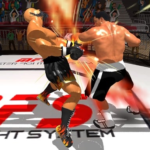Introduction
Call of Duty (CoD) stands as one of the most iconic and commercially successful video game franchises in history. Since its debut in 2003, the series has sold over 400 million copies across numerous platforms. Developed by multiple studios under the Activision umbrella—Infinity Ward, Treyarch, and Sledgehammer Games—Call of Duty has transformed from a World War II shooter into a multi-dimensional universe spanning modern warfare, futuristic combat, and battle royale survival.
The franchise’s blend of cinematic storytelling, high-octane multiplayer, and genre-defining innovations has made it a mainstay in pop culture and esports. This article explores Call of Duty’s evolution, its mechanics, campaigns, multiplayer dominance, and how it continues to shape the industry.
The Origins: World War II Roots (2003–2006)
The first Call of Duty game launched in 2003, developed by Infinity Ward. Inspired by films like Saving Private Ryan, the early entries focused on realistic depictions of World War II combat.
H3: Gameplay Philosophy
-
Emphasized squad-based AI
-
Immersive sound design and cinematic pacing
-
Missions from the American, British, and Soviet perspectives
H4: Notable Titles
-
Call of Duty (2003): The foundation of the franchise
-
Call of Duty 2 (2005): A launch title for Xbox 360
-
Call of Duty 3 (2006): Focused on Normandy and vehicular combat
Pros:
-
Immersive and respectful portrayal of WWII
-
Groundbreaking AI for the era
Cons:
-
Limited multiplayer scope
-
Lack of modern gameplay systems
Rating (WWII Era): 8.0/10
Modern Warfare Revolution (2007–2009)
The launch of Call of Duty 4: Modern Warfare in 2007 redefined the FPS genre. It transitioned the franchise to a contemporary setting with cutting-edge graphics, compelling storytelling, and a multiplayer system that became the industry standard.
H3: Key Features
-
Create-a-Class system
-
Killstreaks and XP-based progression
-
Iconic campaign moments like “All Ghillied Up”
H4: Impact on FPS Genre
-
Inspired other shooters (e.g., Battlefield, Medal of Honor)
-
Evolved online gaming on consoles
Pros:
-
Exceptional pacing and mission variety
-
Addictive multiplayer with prestige ranking
Cons:
-
Short campaign length
-
Some maps lacked balance
Rating (Modern Warfare Era): 9.6/10
Black Ops and Espionage (2010–2015)
Developed by Treyarch, the Black Ops sub-series introduced psychological themes, covert operations, and deep character-driven narratives.
H3: Storyline Depth
-
Explored the Cold War, MK-Ultra, and brainwashing
-
Memorable characters like Alex Mason and Frank Woods
H4: Multiplayer and Zombies
-
Expanded loadout systems
-
Introduced wager matches and theater mode
-
Zombies mode grew into a cult phenomenon
Notable Entries:
-
Black Ops (2010)
-
Black Ops II (2012)
-
Black Ops III (2015)
Pros:
-
Rich storytelling and multiple endings
-
Highly replayable Zombies mode
Cons:
-
Complexity in branching campaigns could confuse some players
-
Connection issues plagued some multiplayer launches
Rating (Black Ops Series): 9.2/10
Advanced Warfare and Futurism (2014–2017)
This era experimented with futuristic tech, exosuits, wall-running, and energy weapons—some of which divided the fanbase.
H3: Notable Innovations
-
Boost jumping and vertical gameplay
-
Pick-10 class systems for loadout customization
-
Supply drops for cosmetic upgrades
H4: Major Titles
-
Advanced Warfare (2014)
-
Infinite Warfare (2016)
-
Black Ops IIII (2018)
Pros:
-
Fast-paced and dynamic movement systems
-
Visually stunning campaigns
Cons:
-
Some fans disliked the sci-fi direction
-
Pay-to-win accusations from loot box mechanics
Rating (Futuristic Era): 7.8/10
Return to the Past: WWII Revisited (2017–2018)
Call of Duty: WWII marked a return to historical roots after years of futuristic content. Sledgehammer Games focused on realism and brotherhood in war.
H3: Back to Boots-on-the-Ground
-
Removed advanced movement
-
Focused on team-based gameplay
-
Introduced a new social hub (Headquarters)
H4: Campaign and Multiplayer Highlights
-
Normandy landing recreated with powerful visuals
-
Multiplayer introduced War mode, emphasizing objectives
Pros:
-
Refreshing historical context
-
Gritty and emotional campaign tone
Cons:
-
Limited weapon variety compared to modern titles
-
Zombie mode lacked depth compared to Black Ops
Rating (WWII Reboot): 8.3/10
Modern Warfare Reimagined (2019–2020)
Modern Warfare (2019) rebooted the original with a new engine, realistic gunplay, and a darker, morally complex campaign.
H3: Tactical Gunplay
-
Recoil patterns and gunfeel improved dramatically
-
Mounting mechanics and night-vision missions
H4: Warzone Begins
-
Introduced cross-platform play
-
Ground War mode brought large-scale battles
Pros:
-
Visually stunning and technically robust
-
Narrative maturity and improved AI
Cons:
-
Long update times and large file sizes
-
Some multiplayer maps felt too cluttered
Rating (Modern Warfare Reboot): 9.1/10
Warzone: The Battle Royale Revolution (2020–Present)
Call of Duty: Warzone expanded the franchise into free-to-play territory and battle royale, attracting over 125 million players.
H3: Core Features
-
150-player matches with loadout drops
-
Unique Gulag mechanic for second chances
-
Integration with annual CoD titles
H4: Seasonal and Live Events
-
Zombie outbreaks, Nuke events, and crossovers with Godzilla, Rambo, etc.
Pros:
-
Free-to-play accessibility
-
Strong live-service model
Cons:
-
Persistent cheater and hacker issues
-
Update bloat and install sizes
Rating (Warzone): 9.0/10
Call of Duty Vanguard and Cold War: Mixed Receptions (2020–2022)
These titles received mixed reviews due to technical issues and recycled content but still contributed significantly to the overall franchise ecosystem.
H3: Cold War
-
Set during the 1980s
-
Strong narrative and Zombies innovation
H4: Vanguard
-
WWII revisit with global campaign
-
Faster TTK (Time To Kill) in multiplayer
Pros:
-
Consistent content updates
-
Campaigns with strong performances
Cons:
-
Buggy launches
-
Lack of innovation compared to Modern Warfare or Black Ops
Rating (Vanguard/Cold War): 7.6/10
Recent Innovations: Modern Warfare II and Warzone 2.0 (2022–2024)
Modern Warfare II (2022) and Warzone 2.0 focused on tactical realism, AI improvements, and enhanced engine capabilities.
H3: Gameplay Improvements
-
Redesigned Gunsmith system
-
AI squads and strongholds in Warzone 2.0
-
DMZ mode introduced PvEvP dynamics
H4: Community Feedback
-
Improved UI, anti-cheat systems
-
Ranked play with skill divisions
Pros:
-
Deeper tactical possibilities
-
Weapon tuning and customization expanded
Cons:
-
High learning curve in Warzone 2.0
-
DMZ mode lacks long-term incentives
Rating (MWII & WZ2.0): 8.7/10
Esports and Community Culture
Call of Duty League (CDL) established a franchised esports system, while YouTubers and streamers like Scump, Nadeshot, and Aydan helped build a massive online community.
H3: CDL Overview
-
City-based teams (e.g., Atlanta FaZe, LA Thieves)
-
Follows a seasonal format with LAN tournaments
H4: Community Impact
-
Content creators drive engagement
-
Modding scene for older CoDs remains active
Pros:
-
Dedicated and passionate fanbase
-
High production esports broadcasts
Cons:
-
Viewer fatigue with yearly releases
-
Esports prize pools lag behind competitors
Rating (Esports & Community): 8.9/10
Pros and Cons Summary
Pros
-
Incredible variety of settings, eras, and game modes
-
Cutting-edge graphics and sound design
-
Competitive multiplayer and strong esports infrastructure
-
Warzone adds free-to-play access for new players
-
Cross-platform and cross-progression support
Cons
-
Annual release model can cause franchise fatigue
-
Inconsistent quality across different titles
-
Large install sizes and performance issues on older hardware
Conclusion
Call of Duty is more than just a video game franchise—it's a cultural juggernaut. From the trenches of World War II to the futuristic battlegrounds of tomorrow, CoD has constantly evolved to stay relevant, competitive, and entertaining. With each new title, it redefines the FPS landscape, whether through groundbreaking campaigns, esports engagement, or massive multiplayer ecosystems like Warzone.
Though not without missteps, Call of Duty’s strengths—tight gameplay, responsive controls, and relentless content drops—make it a staple for millions of players worldwide. Its ability to innovate, adapt, and dominate ensures it will remain at the top of the FPS genre for years to come.
Final Expert Rating: 9.0/10 — A genre-defining series that combines cinematic storytelling, robust multiplayer, and global cultural impact.
































